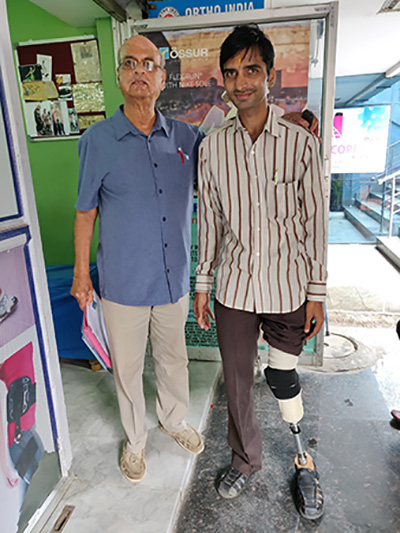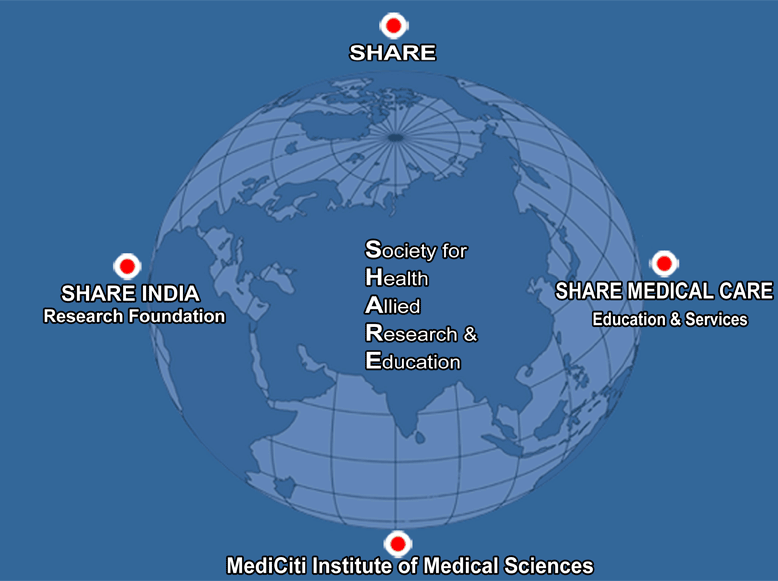
Below Knee Prosthesis
Develop and test 3D printing technology to produce innovative limbs at affordable cost for the disabled in India

Investigators
To promote Science, research, and education in Biomedical and Health related fields to promote global health particularly in developing and underdeveloped countries.
- Dr. Srinivasa Prakash Regalla, Professor and Head, Department of Mechanical Engineering, BITS Pilani, Hyderabad
- Dr. Prakash N. Shrivastava, Professor Emeritus, University of Southern California, USA; Member, SHARE INDIA
- Dr. Kaushik Kalyan, Orthopedics Surgeon, MIMS
- P. Nikethan Reddy, M. Tech, Project Manager
Funding source
Initial Funding: Biotechnology Industry Research Assistance Council (BIRAC), Department of Biotechnology, Government of India; Currently: SHARE USA
Introduction
SHARE INDIA/MIMS and BITS Pilani (HYD) collaborated to develop individually tailored, light weight and comfortable sockets for below knee prosthesis. Our product called “Sukhfit” has been used by over 20 patients till date. We are now in the process of using patient feedback to improve our designs. These improvements include:
- Increase of strength to make it longer lasting;
- Increase of comfort level by redesigning the liner and
- Decrease of the cost of production by reusing waste materials, computer automation and reduced labour.
Aims
- Increase the strength of the prosthesis and make it more effective and longer lasting.
- Improve our digital Imaging process to remotely collect patient’s anatomical data.
- Provide the prosthesis for as many patients as possible and make it attractive for both prosthetists and patients in the near future.
- To provide better comfort, and maximum security for all patients at low cost.
Current status of the project
We have successfully doubled the strength of the prosthesis by using strategically placed reinforcement ribs around the area where higher stresses and loads are acting. We have given 5 new patients our new model “Sukhfit 2020” with the latest changes and are getting new patient feedback to continue further improvements. We also made modifications to our workbench-3 model to improve quality, stability and reliability of patient’s anatomy data taken in the field remotely. We have developed a customized new motor with our required specifications for torque and rpms for the workbench-3 model in collaboration with Laxven Solutions Inc., Cherlapally Telangana with the requirements needed for us. We applied for new formal approval of our patient testing protocol from the MIMS research Committee.

